Q
how to open a byd seal charging port
To open the sealed charging port on a BYD vehicle, here's how you'd typically do it: First, make sure the car is unlocked—on some BYD models, the charging port door automatically unlocks when you unlock the doors. If it doesn't pop open by itself, check the left side of the driver's dash area for a physical button with a charging icon, or try long-pressing the charging button on your key fob (this works on certain models). If it still won't budge, double-check that the vehicle is fully powered down or flip through your owner’s manual to see if there are any special features—like a winter antifreeze mode that might require preheating—before trying again.
For our Malaysian drivers, keep in mind that the tropical heat can speed up rubber seal wear. A quick tip: regularly wipe down the charging port edges and hit ’em with a bit of silicone-based lubricant to keep things sliding smoothly. Also, some newer BYD models let you pop the charging port open remotely using the BYD Malaysia app—super handy on rainy days or when you’re in a rush. And if you ever run into a mechanical jam, resist the urge to pry it open! Call your authorized service center instead—messing with the waterproof seals could lead to short circuits, and that’s definitely not worth the hassle.
Special Disclaimer: This content is published by users and does not represent the views or position of PCauto.
Related Q&A
Q
What is the most sold electric car in the world 2024?
As of 2024, the world's best-selling electric vehicle is the Tesla Model Y. This ride has won over consumers globally, thanks to its impressive range, cutting-edge autonomous driving tech, and that ever-expanding Supercharger network. It's been particularly killing it in North America, Europe, and Asia. For Malaysian buyers, the Model Y might just be a top contender too. Tesla's been steadily beefing up its presence in Southeast Asia, and that includes rolling out Superchargers in Malaysia. Sure, the local EV scene is still growing, but government support for new energy vehicles—think tax breaks and charging infrastructure pushes—is really helping to drive adoption.
But Tesla isn't the only player in town. Brands like BYD, Hyundai, and Nissan also hold significant chunks of the global EV market. Take the BYD Atto 3 (that's the Yuan PLUS) and Hyundai Ioniq 5, for example—they're gaining traction with their solid value for money and fresh, innovative designs.
For Malaysian consumers eyeing an EV, it pays to weigh factors like range, how easy it is to charge up, after-sales service, and local market support. With tech advancing and policies backing things up, the Malaysian EV market is only going to get more diverse in the years ahead.
Q
What is BYD ranked in the world in 2024?
BYD has solidified its position among the world's top automakers in 2024, with standout performance in the new energy vehicle sector. Industry data shows their sales have cracked the global top three, cementing their status as one of the most influential EV brands around. The secret to BYD's success? Their robust vertical integration – they develop everything in-house, from batteries and motors to electronic control systems. On top of that, they're aggressively expanding overseas, with Southeast Asia (Malaysia included) being a key strategic focus.
For Malaysian buyers, models like the Atto 3 are steadily gaining traction thanks to their strong value proposition and impressive range. Local assembly plans are only set to boost their competitiveness further. A big selling point? BYD's Blade Battery technology, which leads the industry in safety and energy density – a crucial advantage in Malaysia's hot climate.
As the global shift to electrification accelerates, BYD looks primed to grow its market share and roll out more innovative products. If you're a Malaysian considering an EV, make sure to weigh factors like charging infrastructure, warranty policies, and local after-sales support before making your decision.
Q
What is the best-selling EV in China 2024?
The best-selling electric vehicle in China's market for 2024 is the BYD Song PLUS EV. This model has won widespread favor among consumers thanks to its impressive range, spacious interior, and BYD's accumulated technological expertise in the EV sector. As a leader in China's EV market, BYD boasts a product lineup spanning from entry-level to high-end models, catering to the diverse needs of different consumers. The success of the Song PLUS EV also reflects Chinese consumers' preference for family-friendly electric SUVs.
For Malaysian consumers, while BYD might not enjoy the same level of brand recognition as Japanese or German marques in the local market, the technological prowess and cost-effectiveness advantages of Chinese brands like BYD are becoming increasingly evident as EVs gain global traction. It's plausible that they could carve out a significant presence in Malaysia in the years to come.
The development of electric vehicles doesn't solely rely on the performance of the cars themselves; the improvement of charging infrastructure is also a crucial factor driving their widespread adoption. The Malaysian government has been actively pushing for the implementation of EV-related policies in recent years, including the construction of charging stations and vehicle purchase subsidies. These initiatives will create favorable conditions for the promotion of electric vehicles in Malaysia.
Q
How many cars has BYD sold in China in 2024?
I haven't been able to track down specific, standalone figures for BYD's sales exclusively in China for 2024 just yet. However, what we do know is that BYD's global sales hit a whopping 4.27 million units last year, with overseas markets contributing 417,204 units. Doing a little back-of-the-envelope math, that roughly puts their China sales at around 3.8528 million units (4.27 million -41.7204 million=3.852796 million).
2024 was an absolutely stellar year for BYD. They didn't just dominate the sales charts in China; they also clinched the title of the world's top-selling new energy vehicle manufacturer. A big part of their success comes down to their multi-brand strategy – think "BYD," "Fang Cheng Bao," "Denza," and "Yangwang" – each catering to different market segments and needs. On top of that, continuous technological innovation, like their "e-platform 3.0 Evo" and "5th Generation DM Technology," has been a major driver propelling those sales numbers ever higher.
Q
How much is the BYD Seal in 2024?
The 2024 BYD Seal comes in multiple variants with different price tags. Specifically, the BYD Seal Dynamic EV is priced at RM 163,800, the BYD Seal Premium (Extended Range) goes for RM 179,800, and the top-of-the-line BYD Seal Performance AWD hits RM 199,800. All these are pure electric D-segment sedans, boasting solid range and equipment levels. Let's talk dimensions: they stretch 4,800mm in length, 1,875mm in width, 1,460mm in height, with a 2,920mm wheelbase. There's seating for five, and a 400-liter trunk to boot. Performance-wise, the variants differ quite a bit. The Seal Performance AWD, for example, rockets from 0-100km/h in a claimed 3.8 seconds, while the Seal Dynamic EV does the same sprint in a stated 7.5 seconds. So, buyers can pick the one that best fits their needs.
Q
What Segment Does BYD Seal Belong to?
The BYD Seal belongs to the D-segment cars. D-segment cars are typically mid to large-sized vehicles, well-known for striking a balance between space, comfort, and performance.
The BYD Seal has a body length of 4,800 millimeters, a width of 1,875 millimeters, and a wheelbase of 2,920 millimeters, offering passengers a relatively spacious interior. The trunk space is also quite decent. Such specification makes it suitable for comfortable long - distance trips and can meet the sufficient space requirements for daily use. Moreover, in terms of performance, the Seal provides different versions with various power outputs. It can provide a smooth daily driving experience and also offer a more exciting high - performance driving feel. Whether for family users or individual users who desire more space and better performance in their vehicles, the D - segment BYD Seal is an appealing choice.
Q
What's the Reslae Value of BYD Seal?
The BYD Seal, a relatively new electric vehicle in the Malaysian market, currently lacks complete data on its resale value, but general resale value for EVs can provide some references. Due to rapid advancements in EV technology, the resale value of electric vehicles typically declines slightly faster than that of comparable internal combustion engine (ICE) vehicles in the first three years—around 50%-60% for EVs versus 60%-70% for ICE cars.
Key factors influencing resale value include battery health (BYD offers an 8-year/160,000 km battery warranty), growing brand recognition (BYD has shown strong performance in recent years), and the maturity of EV infrastructure (such as charging network development). Compared to similar ICE vehicles, the BYD Seal's extended battery warranty and lower operating costs (electricity being significantly cheaper than fuel) may help mitigate depreciation.
For prospective buyers, it is advisable to consider certified pre-owned programs and maintain complete service records to preserve resale value. As EV adoption increases, more definitive resale value data will be provided.
Q
What's the Displacement of BYD Seal?
The BYD Seal is an electric vehicle, so it doesn't use the traditional "CC" (cubic centimeters, used to measure internal combustion engine displacement) as a metric. It provides different versions, such as the Dynamic EV, Premium (Extended Range), and Performance AWD. In terms of the powertrain, the Dynamic EV version has a total motor power of 150kW, a maximum horsepower of 204PS, and a total torque of 310N·m. The Premium (Extended Range) version has a total motor power of 230kW, a maximum horsepower of 308PS, and a torque of 360N·m. The Performance AWD version is more powerful, with a combined system power of 390kW, a combined horsepower of 523PS, and a combined torque of 670N·m. These motors can provide efficient and strong power output, meeting different consumers' needs for speed, range, etc. Moreover, the all - electric drive also complies with the current trend of environmental protection and energy conservation.
Q
What's the PCD Size of BYD Seal?
The PCD (Pitch Circle Diameter) of the BYD Seal is 5×114.3, which means the wheel hub has 5 bolt holes evenly distributed on a circle with a diameter of 114.3 millimeters, matching the standard used by many mainstream Japanese vehicles (such as Honda and Toyota). So, it's easy to find compatible wheel hub options for modification or replacement in the Malaysian market.
Beyond PCD, wheel modifications also require attention to other parameters, including the hub bore (recommended to use OEM-concentric hub rings for precise fitting), offset (ET value), and wheel width to avoid affecting suspension geometry or causing friction. For wheel upgrades, it is advisable to choose EV-rated products that can accommodate the Seal's battery weight and prioritize purchasing through BYD-certified channels to ensure safety and compatibility.
Q
Does BYD Seal Support Apple Carplay?
The BYD Seal doesn't have the Apple CarPlay feature. Apple CarPlay is a system developed by Apple Inc., which allows iPhone users to connect their devices to the in-vehicle infotainment system. Although some car models in the market support this feature, the BYD Seal isn't one of them.
However, the BYD Seal has its own advanced infotainment system. It's equipped with a 15.6 - inch intelligent rotating touchscreen, which can provide a wide range of entertainment and vehicle control functions. This car also adopts a comprehensive set of standard configurations, such as various safety systems, comfortable seats with multiple adjustment options, and a high - quality sound system with 12 Dynaudio speakers. Even though the Seal doesn't have Apple CarPlay, its own infotainment capabilities can still bring users a convenient and pleasant driving experience.
Popular Cars
Model Year
Car Compare
Car Photo
Latest Q&A
Q
How powerful is 2 horsepower?
2 horsepower converts to approximately 1491.4 watts (or 1.4914 kilowatts) in the International System of Units. From a practical experience perspective, 1 horsepower is equivalent to the power output required to carry a 10-kilogram load and run 100 meters in 13 seconds. Therefore, the intensity of 2 horsepower is about twice that level—for example, it can carry a 20-kilogram load to complete 100 meters in 13 seconds, or carry a 10-kilogram load to finish the distance in a shorter time. In daily application scenarios, 2 horsepower falls into a relatively small power range, far lower than the typical 100-200 horsepower output of a family car engine. It is commonly found in small mechanical equipment such as some garden pruning tools, small water pumps, or lightweight agricultural auxiliary machinery, which need to continuously output small power to complete specific tasks. It should be noted that there are distinctions between imperial horsepower and metric horsepower, but the imperial horsepower conversion standard is usually adopted by default in daily use.
Q
What is the lifespan of a 2HP motor?
The lifespan of a 2HP motor is influenced by multiple factors such as usage frequency, maintenance practices, operating environment, and motor type. When used correctly under rated conditions and maintained regularly, its average lifespan typically ranges from 10 to 15 years. However, if it operates for a long time in high-temperature, humid, or dusty environments, or runs under frequent overload, its lifespan may be shortened to 5 to 8 years. In practical application scenarios in Malaysia, such as small pumps for automotive auxiliary systems or small industrial drive motors (if they are of 2HP specification), choosing high-quality brand products and following standardized maintenance procedures (such as regular cleaning, checking lubrication, and electrical connections) can effectively extend the service life. Additionally, the manufacturing process and material quality of the motor also affect its lifespan, and products from reputable brands usually have better durability guarantees. It should be noted that timely replacement of worn parts and avoiding long-term continuous overload operation are key measures to maintain the motor in good condition.
Q
How fast does 2 hp go?
The speed corresponding to 2 horsepower varies depending on the vehicle type and design. Taking electric two-wheelers as an example, 1 horsepower is approximately equal to 0.7457 kilowatts. Referring to relevant model data, an electric two-wheeler equipped with a motor of about 2 kilowatts (approximately 2.68 horsepower) can reach a maximum speed of 62 km/h. Therefore, a vehicle with 2 horsepower has a speed roughly ranging from 55 to 60 km/h.
Such vehicles are typically suitable for short-distance urban commuting scenarios. Some models also feature two riding modes: economy and sport. The full-charge range can reach 105 km, and charging from 0 to 80% takes approximately 6 hours. They also come with a 2-year or 20,000-kilometer warranty. Some models may qualify for subsidies under local policies, further improving commuting cost-effectiveness. The design of these vehicles meets urban transportation needs while balancing practicality and convenience.
Q
How many kW are in 2HP?
The result of converting 2HP to kilowatts (kW) varies slightly depending on the type of horsepower: if it is British mechanical horsepower (commonly used in automotive and other fields), 2HP is approximately equal to 1.49kW (accurate value is approximately 1.4914 kW); If it is metric horsepower (also known as horsepower), 2HP is approximately equal to 1.47kW (accurate value is approximately 1.471kW). In practical applications, such as engine power labeling or motor parameters, approximate values are sometimes used to simplify 2HP to 1.5kW for quick reference. Horsepower (HP) and kilowatts (kW) are both units of power. The former originated from measuring mechanical power (such as steam engines and horse pulling force), while the latter is an internationally recognized unit of power standard. The conversion relationship between the two needs to be determined according to specific definitions, and the choice in different scenarios will affect the final conversion result.
Q
What is the power of a 2 hp motor?
The power of a 2 hp motor can be derived through the conversion between horsepower and the international standard unit of power. HP, or horsepower, has two common standards: imperial and metric. 1 imperial HP is approximately equal to 745.7 watts, while 1 metric HP is about 735 watts. When converted using the metric standard, the power of a 2 hp motor is 2 × 735 = 1470 watts (i.e., 1.47 kilowatts); when using the imperial standard, it is approximately 2 × 745.7 ≈ 1491.4 watts (around 1.49 kilowatts). In practical applications, different standards may be adopted in different scenarios, but a common approximation in the industry is that 2 hp is roughly equal to 1.5 kilowatts. Horsepower is a traditional unit of power, often used to describe the output capacity of equipment such as motors and engines. However, in the International System of Units, watts or kilowatts are more recommended as units of power. Therefore, in formal technical documents, horsepower values are usually converted to watts or kilowatts for labeling to ensure the uniformity and accuracy of technical communication. Mastering such unit conversion relationships helps to accurately understand the power output capacity of motors in scenarios such as equipment selection and performance evaluation.
View MoreRelated News

2025 BYD Seal Coming to Malaysia with DiSus-C Adaptive Suspension
JohnAug 13, 2025
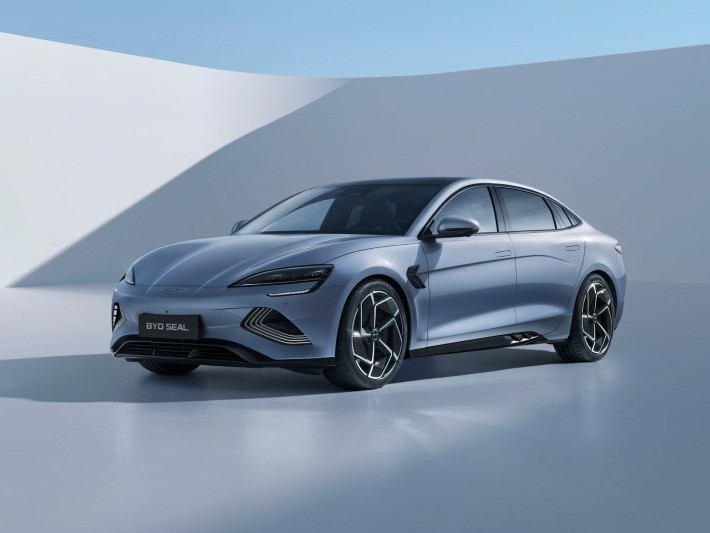
BYD Seal interior design revealed: A fusion of modern technology and luxury
RobertJul 15, 2025
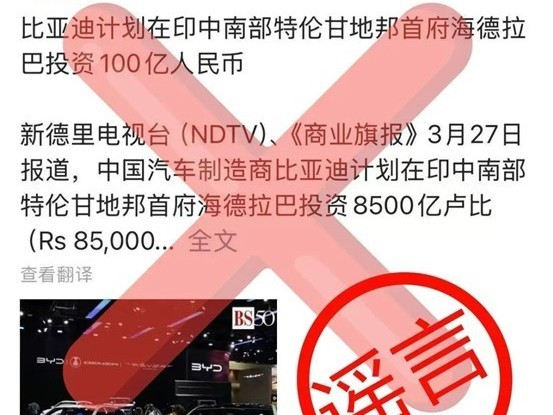
BYD Denies Rumors of ¥10 Billion Investment in Factory in India
JamesApr 1, 2025
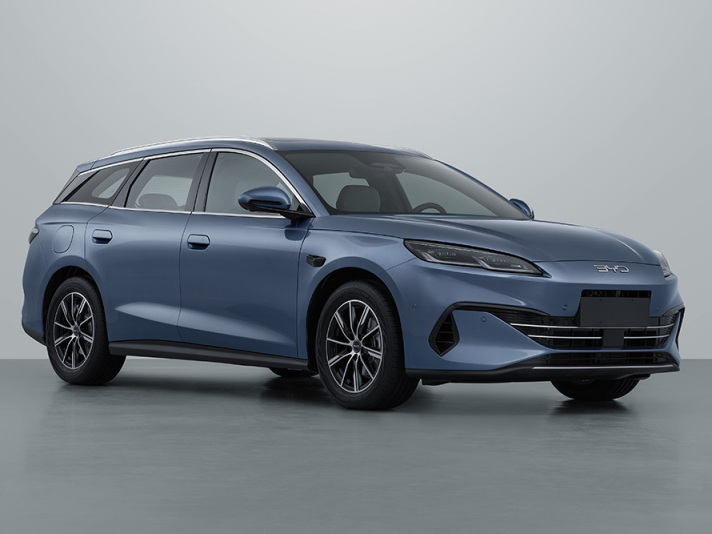
Photos of the BYD Seal 06 Touring Edition Reveal the Brand's Entry into a New Niche Market
JamesMar 24, 2025
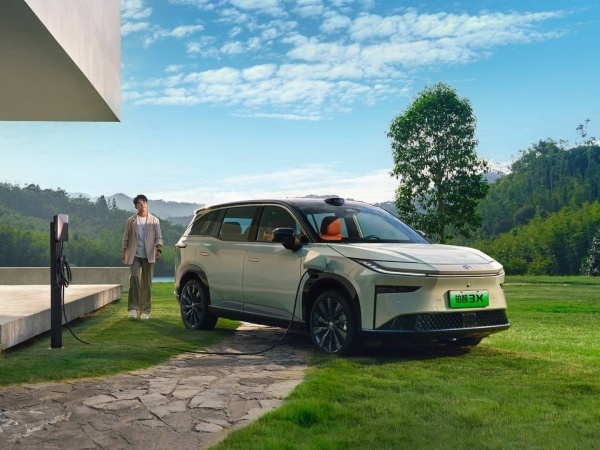
Toyota has released a surprising all-electric SUV in China, priced lower than BYD
LienMar 7, 2025
View More


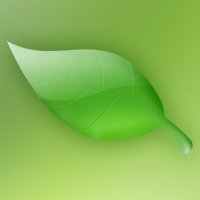
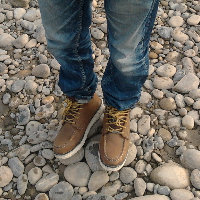








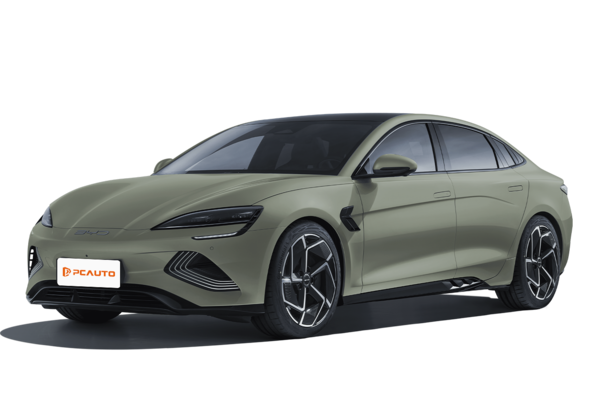





Pros
Cons